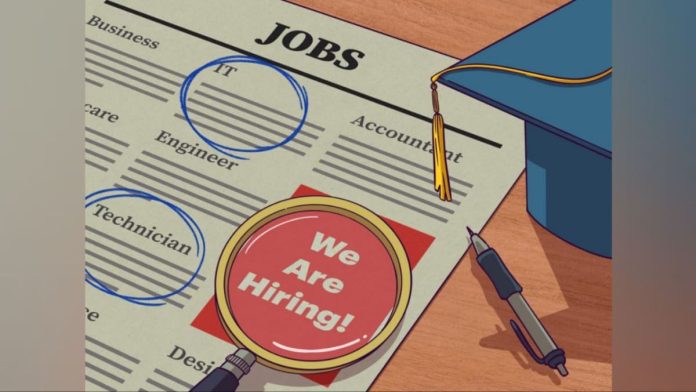For example, telecommunications company M1 has been hiring across the board, with about 100 vacancies in different roles such as software developers, HR and communications.
M1 deputy director of human resources Gerald Lau noted the shortage of tech talent in the labor market.
“I won’t say we are looking for (tech talent) the most, but that the supply is the scarcest, and the demand by both ourselves and the market is the highest,” he said.
In general, DBS’ Mr Seah said that sectors such as aviation and tourism, which “have been shedding headcounts over the last two years because of the pandemic will be hiring very aggressively”.
MOM also said earlier this week that companies here have become more profitable, with seven in 10 employees receiving wage increases in 2021, up from just under six in 10 in 2020. Some of these companies had implemented wage cuts in 2020.
PUBLIC, PRIVATE SECTORS RAMP UP HIRING
Indeed, most employers whom TODAY spoke to have been aggressively hiring in the past few months.
And like what Mr Seah said, this has especially been the case for firms which had been badly pummeled by the pandemic, such as those in the aviation sector.
In August 2020, American aerospace manufacturer Pratt and Whitney laid off more than 400 workers in Singapore — almost 20 percent of its workforce here at that time — as part of a retrenchment exercise.
Responding to TODAY’s queries, the firm said that since then, it had recruited about 250 staff members in Singapore last year — including rehired employees who were let go the previous year — and will be looking to hire the same number this year, with about 20 per cent of these for entry-level roles.
The vacancies include many “technological type of roles” such as inspectors, mechanics, machinists, engineers and data analysts, said Mr Tim Cormier, Pratt and Whitney’s vice-president of aftermarket operations for Asia-Pacific.
He said: “It is a really large number of employees that we are looking to onboard and bring into our business as it rebounds through the post-pandemic era.”
He added: “We’ve seen a resurgence a bit quicker than we originally expected … we did see the need to hire employees a bit sooner than we had expected, which has been a great thing for us.”
Likewise, low-cost airline Scoot has also ramped up its hiring plans, following a tumultuous period during the pandemic. In September 2020, Scoot’s parent company, Singapore Airlines (SIA), had retrenched about 2,400 workers — about 9 percent of the group’s employees — across SIA, SilkAir and Scoot in Singapore and overseas.
Scoot vice president of human resource Theresa Tan said the airline is now “expanding in tandem with growing travel demand and we are looking to hire across different job functions, extending from corporate staff to cabin and flight crew”.
Apart from cabin and flight crew, Scoot is also looking to hire for roles such as mobile application developers, web developers, revenue and pricing analysts, distribution specialists, HR specialists and ground operations specialists. Ms Tan did not say how many people the firm is looking to hire.
Over at Integrated Health Information Systems (IHiS), chief executive officer Ngiam Siew Ying said that the technology agency for public healthcare is looking to hire “as many as possible”.
The overall demand for healthcare workers and related fields has gone up since the start of the pandemic and remains elevated as Singapore repays what Health Minister Ong Ye Kung has described as the “business-as-usual” debt.
Ms Ngiam said that during the past two years, hiring had been easier for IHiS, which experienced an increase in demand for its backend healthcare services partly due to the pandemic.
“Because of COVID-19 and the need for technology (in healthcare), we had been recruiting, and for some of the other companies which may be downsizing at that point because the economy was flat, it released a bit of capacity which we could take in,” she said.
She added: “Now that the markets are picking up (and) the technology space is also getting tight … it’s no surprise that (hiring) will be more challenging and we need to compete more to be able to get the people we need.”
Ms Ngiam said that IHiS is looking to hire graduates from a “variety of backgrounds” — from people with technical skills in roles such as IT architects, software developers and data scientists, to those with more general skills for positions such as business analysts.
In response to TODAY’s queries, the Public Service Division (PSD) said it is also looking to bring in more fresh talent.
A PSD spokesman said that regardless of market conditions, the Public Service “faces similar challenges as the private sector in attracting and retaining staff”.
“To this end, PSD has been making moves to enhance the employee value proposition of a career in the Public Service, such as by expanding job rotations and external attachments so that public officers can experience and learn new things constantly,” the spokesman said.
To increase awareness among fresh graduates on the positions available in the Public Service, government agencies work with institutes of higher learning to conduct recruitment talks, as well as participate in career fairs and seminars.
There is also a central job portal for the Public Service, careers.gov.sg, where job seekers can view vacancies across all government agencies and apply to them.

